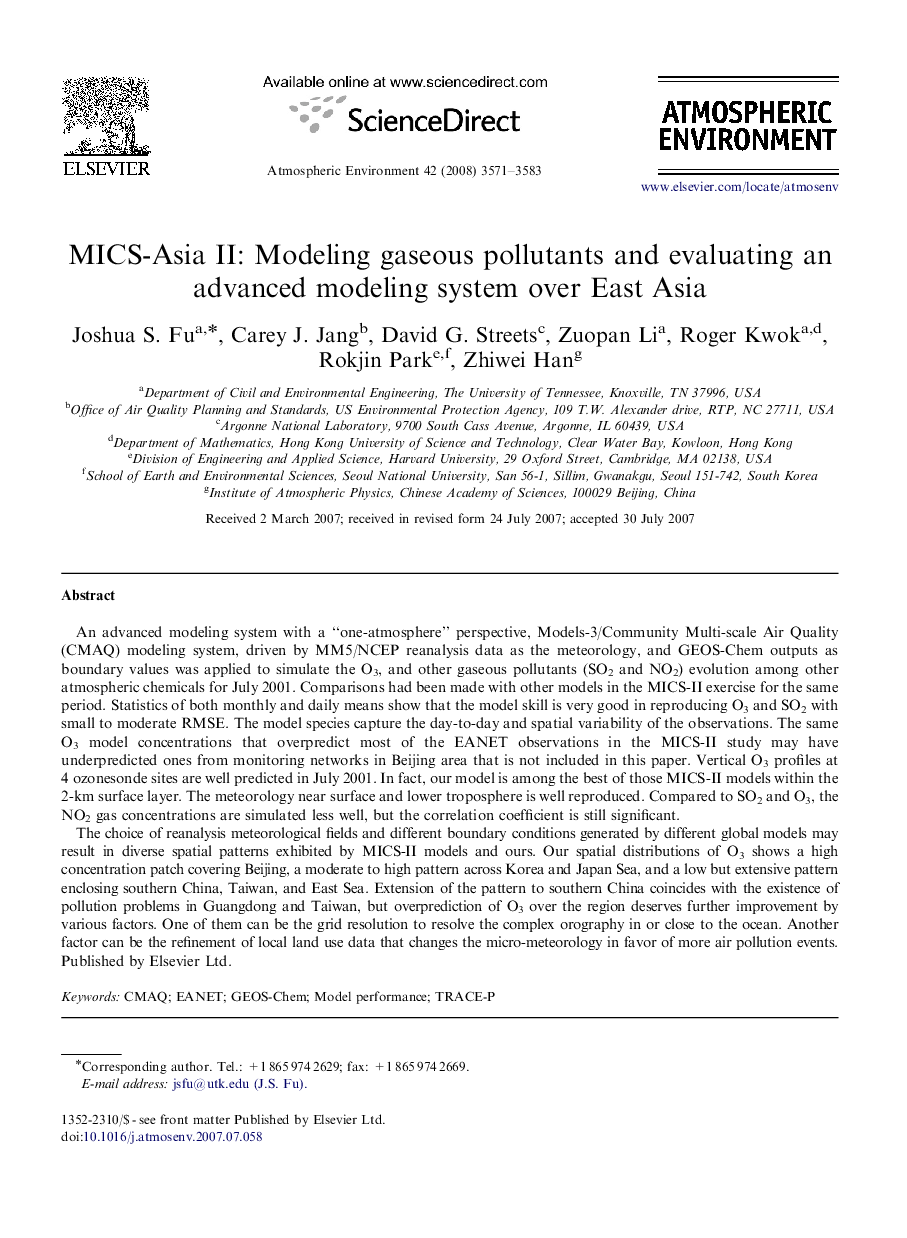| Article ID | Journal | Published Year | Pages | File Type |
|---|---|---|---|---|
| 4442061 | Atmospheric Environment | 2008 | 13 Pages |
An advanced modeling system with a “one-atmosphere” perspective, Models-3/Community Multi-scale Air Quality (CMAQ) modeling system, driven by MM5/NCEP reanalysis data as the meteorology, and GEOS-Chem outputs as boundary values was applied to simulate the O3, and other gaseous pollutants (SO2 and NO2) evolution among other atmospheric chemicals for July 2001. Comparisons had been made with other models in the MICS-II exercise for the same period. Statistics of both monthly and daily means show that the model skill is very good in reproducing O3 and SO2 with small to moderate RMSE. The model species capture the day-to-day and spatial variability of the observations. The same O3 model concentrations that overpredict most of the EANET observations in the MICS-II study may have underpredicted ones from monitoring networks in Beijing area that is not included in this paper. Vertical O3 profiles at 4 ozonesonde sites are well predicted in July 2001. In fact, our model is among the best of those MICS-II models within the 2-km surface layer. The meteorology near surface and lower troposphere is well reproduced. Compared to SO2 and O3, the NO2 gas concentrations are simulated less well, but the correlation coefficient is still significant.The choice of reanalysis meteorological fields and different boundary conditions generated by different global models may result in diverse spatial patterns exhibited by MICS-II models and ours. Our spatial distributions of O3 shows a high concentration patch covering Beijing, a moderate to high pattern across Korea and Japan Sea, and a low but extensive pattern enclosing southern China, Taiwan, and East Sea. Extension of the pattern to southern China coincides with the existence of pollution problems in Guangdong and Taiwan, but overprediction of O3 over the region deserves further improvement by various factors. One of them can be the grid resolution to resolve the complex orography in or close to the ocean. Another factor can be the refinement of local land use data that changes the micro-meteorology in favor of more air pollution events.
